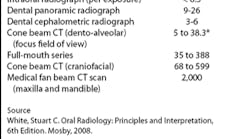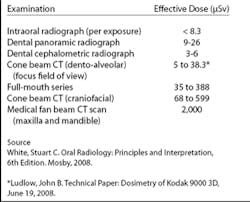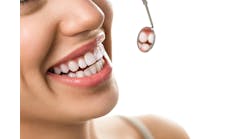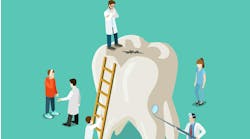Justin Moody, DDS
For more on this topic, go to www.dentaleconomics.com and search using the following key words: dental technology, digital radiography, digital X-rays, Justin Moody, DDS.
In the medical and dental office, having the proper technology can be crucial to attracting new patients and retaining established ones. While word-of-mouth referrals still affect practice growth, the Internet, broadcast, and print media reach millions of people each day. Advice abounds on treatments, procedures, and medical devices, showing viewers how technology influences the quality of their treatment. The same is true for technology in the dental office. As patients’ awareness increases, they look to their local practitioners with the notion that the technology-conscious practice is the more conscientious practice. Digital radiography is one highly visible part of the dental experience that impacts both patient perception and treatment potential.
A recent segment on the Dr. Oz show discussed digital radiography in the dental office. Dr. Mehmet Oz was a featured health expert on “The Oprah Winfrey Show” for more than five seasons. He is now a frequent guest on various television shows, author of numerous books and magazine articles, and has ranked among the most influential people in such trusted publications as Forbes and Time magazines.
During his show, Dr. Oz discussed radiography with guest Ada Cooper, DDS, an ADA spokesperson, who noted that dental X-rays should be taken when necessary for diagnosis and treatment. Dr. Oz added that he believes digital radiography makes more sense than traditional film because of its lower radiation, and that simple precautions, such as use of the lead apron and thyroid guard, make it an even safer choice.
Dr. Oz advised patients to ask some questions before the radiographic process: “Why do I need it, and how will it change my care?” My answer is that radiography — and in my office digital radiography (DEXIS®) — is imperative to proper diagnosis, treatment, and patient education. With clear, large images, I can see details that may be missed with smaller, traditional film X-rays.
To Dr. Oz’s other question: “Is there another test that doesn’t require radiation?” The answer is no. I cannot tell just by looking in the mouth, or even with an intraoral camera, information on conditions that lie underneath the gum and bone that I can obtain through digital X-ray. As to the next question, “Am I getting the lowest radiation dose possible?” dentists try to the best of their ability to adhere to the As Low As Reasonably Achievable (ALARA) principle. Each patient is treated individually, and imaging is prescribed accordingly.
Jeffrey Rohde, DDS, MS, recently wrote in an article that digital intraoral X-rays provide higher clarity with reduced exposure to the patient. He added, “The return on investment for a dental practice to integrate this technology is around four to five months. From a business and clinical standpoint, it makes no sense whatsoever to still use dental film.”
I know I am glad that I made the switch from film to digital X-ray. For me, it represents a responsible choice for my patients’ safety and the potential of my practice. As patients become increasingly aware of the connection between technology and their dental care, it is important to show them that your practice is knowledgeable about technology and that you are willing to make the investment to prove it.
Dr. Justin Moody is a diplomate with the American Board of Oral Implantology/Implant Dentistry and the International Congress of Oral Implantologists, and an associate fellow with the American Academy of Implant Dentistry. He also holds mastership and fellow status at the Misch International Implant Institute. He can be reached at [email protected].







